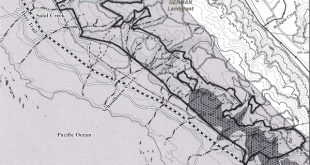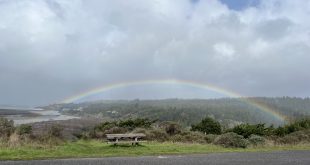Friends of Gualala River (FoGR) achieved a major accomplishment that will help improve water quality and reduce sediment pollution in the Gualala River and its tributaries – a pivotal step in assisting salmonid recovery efforts.
After nearly two years of legal actions and negotiations, a settlement agreement was reached last month between FoGR, the State Water Resources Control Board (State Water Board) and the North Coast Regional Water Quality Control Board (Regional Water Board). The agreement outlines the process that the Regional Water Board will take to incorporate the Gualala River Total Maximum Daily Load for sediment (TMDL) into the North Coast Basin Plan, and specifies how the TMDL will be implemented to achieve water quality standards. A schedule for implementing the project was established to keep the effort on track.
FoGR filed a petition in July 2021, to compel the Regional Water Board and the State Water Board to incorporate the Gualala River TMDL for sediment into the North Coast Basin Plan and to develop and implement an action plan specifying how sediment pollution will be reduced throughout the watershed. The Regional Water Board is responsible for regulating sources of sediment and temperature impairments necessary to restore water conditions to support cold water fisheries in the Gualala River watershed (GRW).
In 2001, the U.S. EPA listed the Gualala River as impaired under the Clean Water Act 303(d) due to excessive sediment and high temperatures – both conditions that hamper fish spawning and create unhealthy conditions for fish throughout their lifespan. Now that FoGR has successfully negotiated an agreement, work can begin in earnest to restore the impaired Gualala River and its tributaries.

For years FoGR has viewed the TMDL strategy as an important approach to help improve the health of the watershed and assist steelhead and salmonid recovery. Several miles north, the Garcia River shows signs of a strong recovery with the return of Coho and Chinook, which those involved in the effort have largely credited to its TMDL Implementation Plan that has been carried out over the past 30 years. The Garcia River’s successful restoration has encouraged FoGR’s TMDL advocacy over the past several years.
Timber operations are responsible for discharging heavy loads of sediment and Gualala Redwood Timber (GRT) filed a letter with the State Water Board in October 2022, requesting that the entire Gualala River Watershed removed from the list of impaired rivers. “FoGR’s work will not be thwarted and we will keep doing everything we can to see that the Gualala River gets the protections that it deserves,” said FoGR Treasurer and Secretary Jeanne Jackson.
The process of developing the Gualala River TMDL implementation plan, which will be led by the Regional Water Board, will take several years and is open to public participation. FoGR celebrates this milestone and recognizes that it has a lot of work ahead to ensure a robust plan is created and put into action. “We need community members who love the river to get involved with FoGR as we engage in this critical effort,” said FoGR President Nathan Ramser.
For more information, see:
Stipulated Settlement Agreement and Judgment of Dismissal between FoGR & Water Boards, April, 2023
Gualala River Total Maximum Daily Load for sediment
FoGR Launches Salmonid and Watershed Restoration Project
Will the Gualala River Watershed receive the protection it deserves?
 Friends of Gualala River Protecting the Gualala River watershed and the species living within it
Friends of Gualala River Protecting the Gualala River watershed and the species living within it


